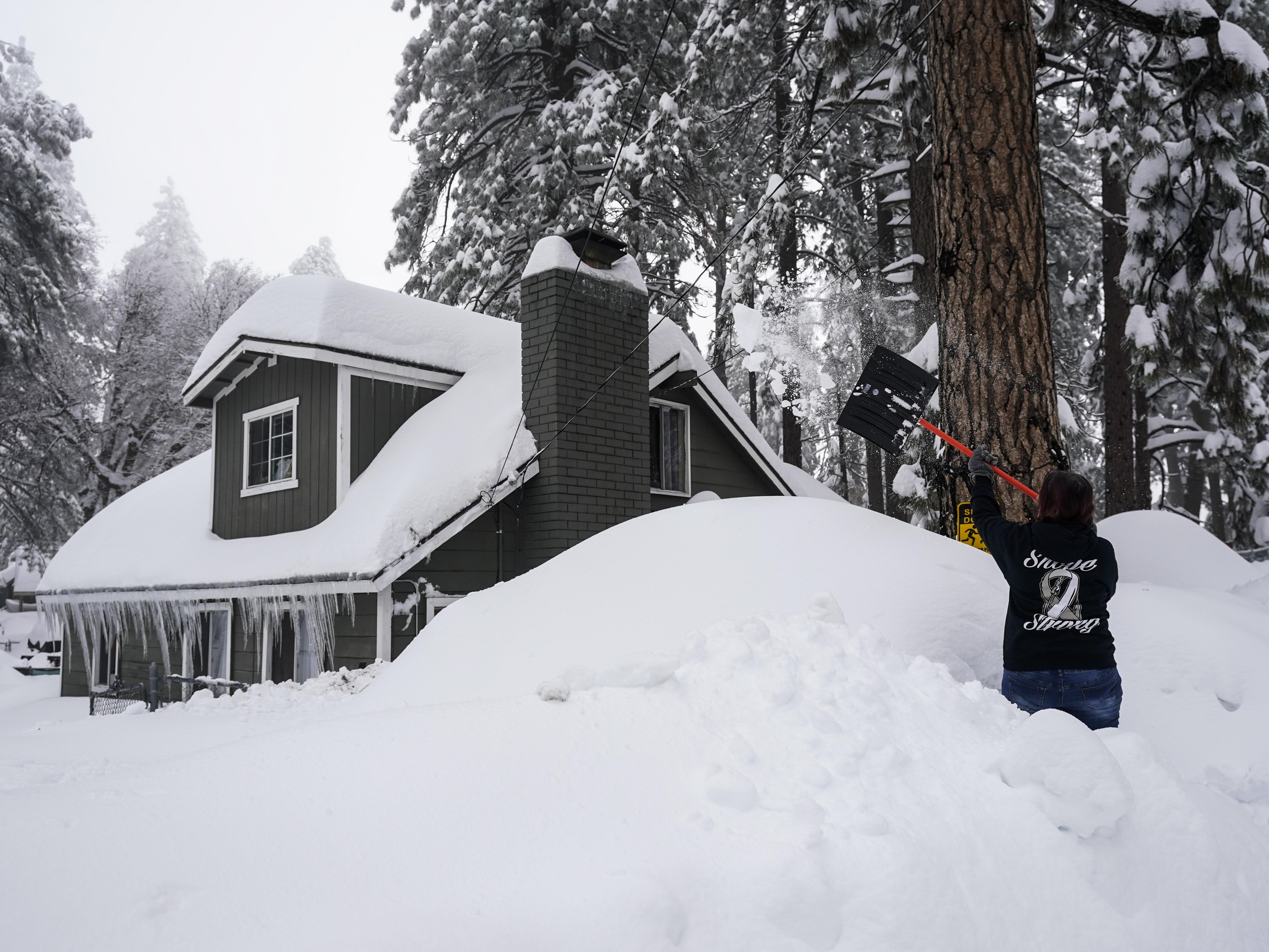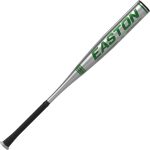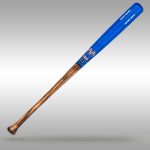Yes, composite bats can be stored in cold weather, but using them in very cold temperatures can lead to cracks and other problems with the bat. It is generally recommended to avoid using composite bats in cold weather and to instead use alloy bats, which can withstand the cold better.

Credit: www.capradio.org
Understanding Composite Bats
Composite bats can be stored in cold weather, but it is not recommended. Using a composite bat in very cold temperatures could result in cracks or other problems with the bat, especially at the connection point of the barrel. Alloy bats (aluminum bats) are better suited for cold weather conditions.
What Are Composite Bats?
Composite bats are a popular choice among baseball and softball players due to their advanced technology and performance-enhancing features. These bats are made using a combination of different materials, such as fibers, resins, and plastics, which are layered and compacted to create a durable and high-performing bat. The composite material used in these bats offers several advantages over traditional aluminum bats.How Do Composite Bats Differ From Aluminum Bats?
Composite bats differ from aluminum bats in various ways, making them a preferred choice for many players. Unlike aluminum bats that are made from a single piece of metal, composite bats are built with layering technology, allowing for more precision and control during manufacturing. This layering process helps in optimizing the bat’s performance by providing a larger sweet spot, better weight distribution, and improved trampoline effect. Additionally, composite bats have a unique ability to reduce the vibrations felt by the player upon ball contact, thanks to the flexible nature of the composite material. This feature minimizes hand sting and discomfort, allowing for a more comfortable and enjoyable playing experience.Benefits And Drawbacks Of Composite Bats
There are several benefits and drawbacks to consider when using composite bats: Benefits:- Enhanced Performance: Composite bats have a larger sweet spot, which means greater hitting distance and improved accuracy.
- Reduced Vibrations: The composite material reduces hand sting, providing players with a more comfortable grip and better control.
- Lightweight Design: Composite bats are often lighter than their aluminum counterparts, allowing for faster swing speeds and increased power.
- Customizable Flexibility: Manufacturers can design composite bats with specific levels of flex, catering to different players’ preferences and playing styles.
- Break-in Period: Unlike aluminum bats, composite bats require a break-in period before they reach optimal performance levels. This involves hitting several balls to allow the fibers in the barrel to loosen up and create a trampoline effect.
- Weather Sensitivity: Composite bats are more sensitive to temperature changes, particularly extreme cold weather. Storing or using these bats in cold temperatures can result in a decrease in performance and potential damage to the bat.
- Higher Price Point: Composite bats tend to be more expensive than aluminum bats due to the advanced technology and materials used in their construction.
Effect Of Cold Weather On Composite Bats
In cold weather, storing composite bats may lead to cracks and other problems, especially at the connection point of the barrel. It is generally recommended to use alloy bats instead, as they can withstand cold temperatures better.
Can Composite Bats Be Stored In Cold Weather?
Storing composite bats in cold weather can have potential effects on their performance and durability. While they can technically be stored in cold temperatures, it is important to consider the impact it may have on the bat’s overall effectiveness. Understanding the consequences of exposing composite bats to cold weather is crucial for baseball players and enthusiasts.
What Temperature Is Too Cold For Composite Bats?
The ideal temperature for storing composite bats is between 60°F and 70°F. Temperatures below this range, particularly below freezing, can pose a risk to the bat’s integrity. Extreme cold can cause the composite materials to become more brittle, increasing the likelihood of cracking or breaking. Therefore, it is recommended to avoid storing or using composite bats in temperatures below 50°F to ensure their longevity.
Potential Issues With Using Composite Bats In Cold Weather
The use of composite bats in cold weather can lead to various issues:
- Decreased performance: Cold temperatures can affect the flexibility of the composite materials, causing a reduction in the bat’s trampoline effect and overall power. This can result in decreased hitting distances and lower ball exit speeds.
- Increased risk of cracking: The extreme cold can make the composite materials more prone to cracking or breaking, especially at the connection point of the bat’s barrel. This can significantly impact the bat’s performance and may necessitate repairs or replacement.
- Reduced durability: Cold weather conditions can weaken the overall structure of the composite bat, leading to a shorter lifespan. The repeated exposure to cold temperatures can cause the bat to lose its elasticity, making it more susceptible to damage.
It is important to note that while composite bats can be stored in cold weather if necessary, it is recommended to avoid using them in such conditions to protect their performance and longevity. If playing in cold weather is unavoidable, it is advisable to consider using aluminum or alloy bats, as they have better resistance to extreme temperatures.
Expert Insights And Recommendations
When it comes to storing composite bats in cold weather, it is important to consider the insights and recommendations from experts in the field. Here are some expert opinions:
- Keep composite bats in a temperature-controlled environment: According to experts, composite bats should be stored in a place where the temperature remains consistent, preferably between 50°F and 70°F. Extreme temperature variations can cause the composite material to expand or contract, which may lead to cracks or other damage.
- Avoid storing composite bats in extremely cold places: Cold temperatures can make the composite material more brittle, increasing the risk of damage. It is best to keep composite bats away from freezing temperatures to ensure their longevity.
- Consider using bat sleeves or bat socks: These protective covers can provide an extra layer of insulation and help maintain a stable temperature for the bat. Some experts recommend using bat sleeves made from neoprene or similar materials to protect composite bats from cold weather.
- Store composite bats upright: Storing composite bats vertically can minimize stress on the bat and prevent unnecessary bending or warping. This can help preserve the bat’s performance and durability over time.
If you are concerned about storing composite bats in cold weather, there are some alternatives you can consider:
- Alloy bats: Alloy bats, also known as aluminum bats, are known to withstand cold weather better than composite bats. The aluminum barrel of alloy bats has less chance of catastrophic failure in cold temperatures.
- Hybrid bats: Two-piece hybrid bats, which combine a composite barrel with an aluminum barrel, can also be a suitable option for cold weather. The aluminum barrel provides more durability and flexibility in colder temperatures.
- Wood bats: Wood bats, such as maple or ash, are another alternative for cold weather conditions. Wood bats are less affected by temperature changes and provide a traditional, solid feel.
To ensure the longevity and performance of composite bats in cold weather, here are some best practices to follow:
- Inspect the bat regularly: Before and after each use, examine the bat for any signs of damage or cracks. Cold weather can exacerbate existing issues, so it is crucial to catch any problems early.
- Avoid extreme temperature changes: If you live in an area with fluctuating temperatures, it is advisable to bring the bat indoors after each use and store it in a temperature-controlled environment.
- Do not use a cold bat: Using a composite bat in extremely cold temperatures can increase the risk of breakage. Allow the bat to acclimate to room temperature before using it to reduce the chances of damage.
- Clean the bat after use: Dirt, moisture, and other debris can negatively impact the performance of a composite bat. Use a mild detergent and a soft cloth to clean the bat after each use, paying close attention to the barrel and handle.
- Use appropriate bat weight: Cold weather can affect the performance of a bat, so it is essential to use an appropriate weight that suits the player’s strength and swing speed.

Credit: www.architecturaldigest.com

Credit: pix11.com
Frequently Asked Questions For Can Composite Bats Be Stored In Cold Weather?
Can You Leave A Composite Bat In The Cold?
Yes, it is not recommended to leave a composite bat in the cold weather as it can result in cracks or other issues with the bat. It is better to store them in a temperature-controlled environment to maintain their durability and performance.
What Temp Is Too Cold For Bats?
Composite bats should not be stored or used in very cold temperatures. Cold weather can cause cracks or other damage to the bat, especially at the connection point of the barrel. It is recommended to use aluminum bats in colder temperatures as they can withstand the cold better.
What Weather Can You Use A Composite Bat?
Composite bats are not recommended for use in cold weather. The cold temperatures can cause cracks or other problems with the bat, particularly at the connection point of the barrel. It is better to use alloy bats, which can withstand the cold weather better.
Can You Use A Hybrid Bat In Cold Weather?
Yes, you can use a hybrid bat in cold weather. A two-piece hybrid bat, which includes a composite bat with an aluminum barrel, is recommended. The aluminum barrel has less chance of failure in cold weather, and the two-piece construction provides a smoother feel.
Conclusion
When it comes to storing composite bats in cold weather, it is important to consider the potential risks. Using a composite bat in very cold temperatures could result in cracks or other problems, particularly at the connection point of the barrel.
It is generally recommended to store composite bats in a temperature-controlled environment to prevent damage. Alternatively, alloy bats, with their better tolerance for cold weather, can be a safer choice. Ultimately, taking proper care of your bats during the colder months will help ensure their longevity and maintain their performance.

General Manager & Auditorial Head.
Killian Jake is a World Sports Traveler and hobbyist sports lover. By exploring different sorts of playing modules like indoor, outdoor, and many more. As for professionalism and writing, it’s helpful to give you the right suggestions on different games and sports.





